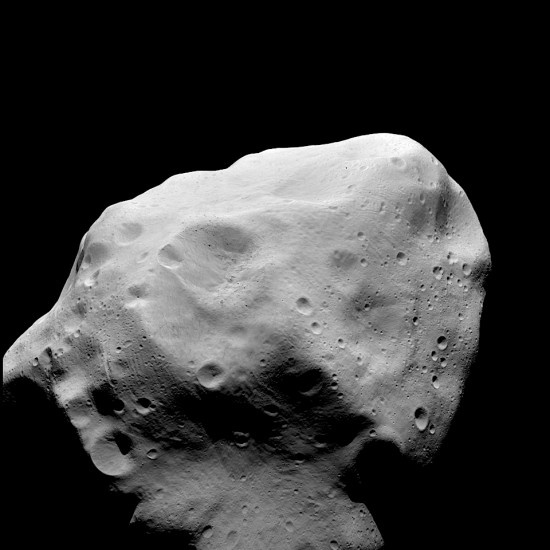Jan 15, 2015
Electrically active objects dominate the Solar System
Small planetoids, called Near Earth Objects (NEO), are a concern for space scientists because it is thought that large rocks might strike our planet with devastating force. It is a commonly held belief that such an object caused the extinction of the dinosaurs. The Earth has supposedly been struck many times by asteroids and comets, so astronomers have been tracking as many objects as they can find to see if any of them cross the plane of Earth’s orbit.
Most asteroids are presumed to be loosely compacted “rubble piles”. The idea came about in order to help explain various mass anomalies that have been seen in asteroid crater studies, along with experiments like Deep Impact, and observations of what appears to be “regolith migration” on asteroids Itokawa and Eros. Since gravitational acceleration on asteroids is minute, banding, landslides, and layering is thought to be due to micro-meteor impacts shaking the asteroids. Over long periods of time, the shaking sorts the materials by size and density in the same way that a jar of sand and pebbles will sort itself when it is shaken.
Some asteroids, such as Vesta, have craters that should have shattered them into fragments when they were hit. Vesta is only 520 kilometers wide, but possesses a crater 460 kilometers in diameter The only suitable explanation, according to gravity-based models of asteroid behavior, is that they are like big sand piles, absorbing impacts without shattering.
The electric model of asteroid formation does not require that one body crash into another one for there to be craters. Electric arcs have the ability to cut surfaces, scoop out material and then accelerate it into space, leaving clean cuts, deep pits and chaotic topography. The effect is commonly called electric discharge machining (EDM). Comets also exhibit surface features that are the same as what has been seen on asteroids, leading Electric Universe theorists to speculate that the two are really one thing and not “dirty snowballs” vs. rocky bodies.
Recently, NASA scientists have become more interested in the environment around asteroids because they are speculating about a manned-mission to one of the larger ones. According to a recent press release, they are planning studies of various bodies to see if their electrical activity will be a problem for astronauts.
Conventional viewpoints consider solar wind ions to be the method by which asteroids accumulate electric charge. It is the magnetic fields accompanying the charged particles from the Sun that “… warp, twist, and snap as they slam into the magnetic fields around other objects…” Those fields impart acceleration that slam particles into asteroids, blasting electrons from their surfaces, increasing the positive charge in sunlit regions.
Shadowed areas accumulate negative charge, since electrons “fly ahead” of heavier positive ions and accumulate in those regions where positive charge has increased.
A theory of electrical interaction might provide a more reasonable hypothesis than sunlight and angular momentum, although the sunlight theory has the advantage of acceding to the billion-year timescale that dominates science today. Everything takes so much time that the numbers no longer have meaning and is relegated to a past so remote that it is unimaginable.
As Wal Thornhill wrote: “The flaw in the conventional approach is that only gas-phase chemical reactions and reactions induced by solar radiation (photolysis) are considered. The far more energetic molecular and atomic reactions due to plasma discharge sputtering of an electrically charged comet nucleus are not even contemplated…”
This leads to the conclusion that comet-like behavior could also take place on an asteroid. As mentioned in a previous Picture of the Day, there are several “Centaur objects” orbiting near the asteroid belt that demonstrate an indeterminate state between comet and asteroid. 2060 Chiron is classified as both comet and asteroid. Chiron manifests a coma whenever it reaches its closest approach to the Sun, although it does not grow a tail. 174P Echeclus displayed a coma in 2005, so it too is now classified as a cometary asteroid. At least ten Centaurs are known to have cometary activity at great heliocentric distance.
According to a press release from December 2010, asteroid 596 Scheila became much brighter than previously observed, forming a large C-shaped coma. The Swift space-based observatory did not find water vapor thought to be “normally” associated with comets. Instead, two dusty plume-like tails trailed behind the asteroid, subsequently fading over the next several months. The primary reason for thinking that 596 Scheila is an asteroid and not a comet is because there is no water vapor in its vicinity.
Proponents of mainstream viewpoints are slowly beginning to realize that asteroids and comets exist in a continuum: neither are strictly identical nor completely different from the other. It is electric effects that are seen. Discharges and arcs form the comet phenomena, so exposing an asteroid to an intense electric field over time will most likely turn it into a comet.
Stephen Smith




